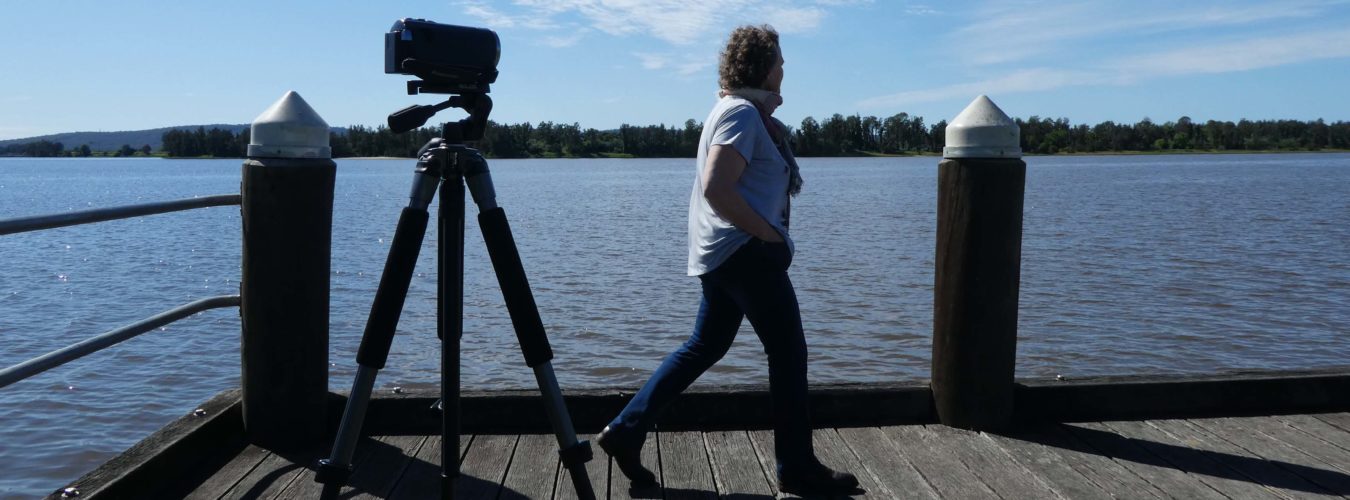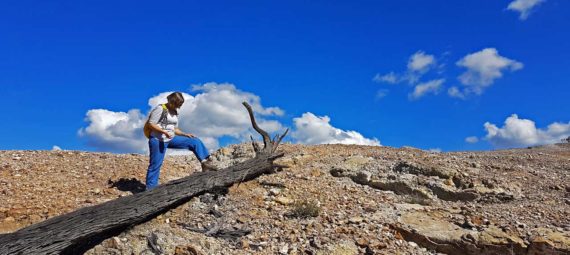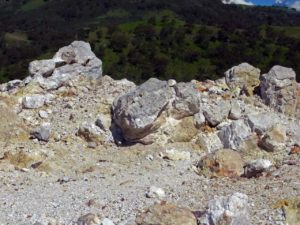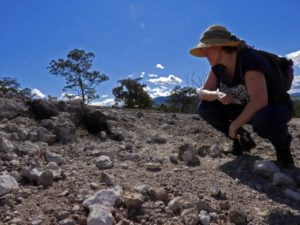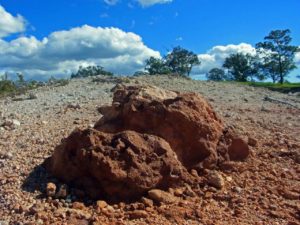If you come to Burning Mountain expecting to see the smoke and flames that are perhaps implied in the name, you might be a bit disappointed.
Indeed, while we were gazing at the faintly smoking peak of the mountain from the viewing platform at the end of the track – a four year old boy brought there to see it by his father was not very impressed. I can’t remember the child’s words exactly, but it amounted to “OK, where the hell is the fire?”
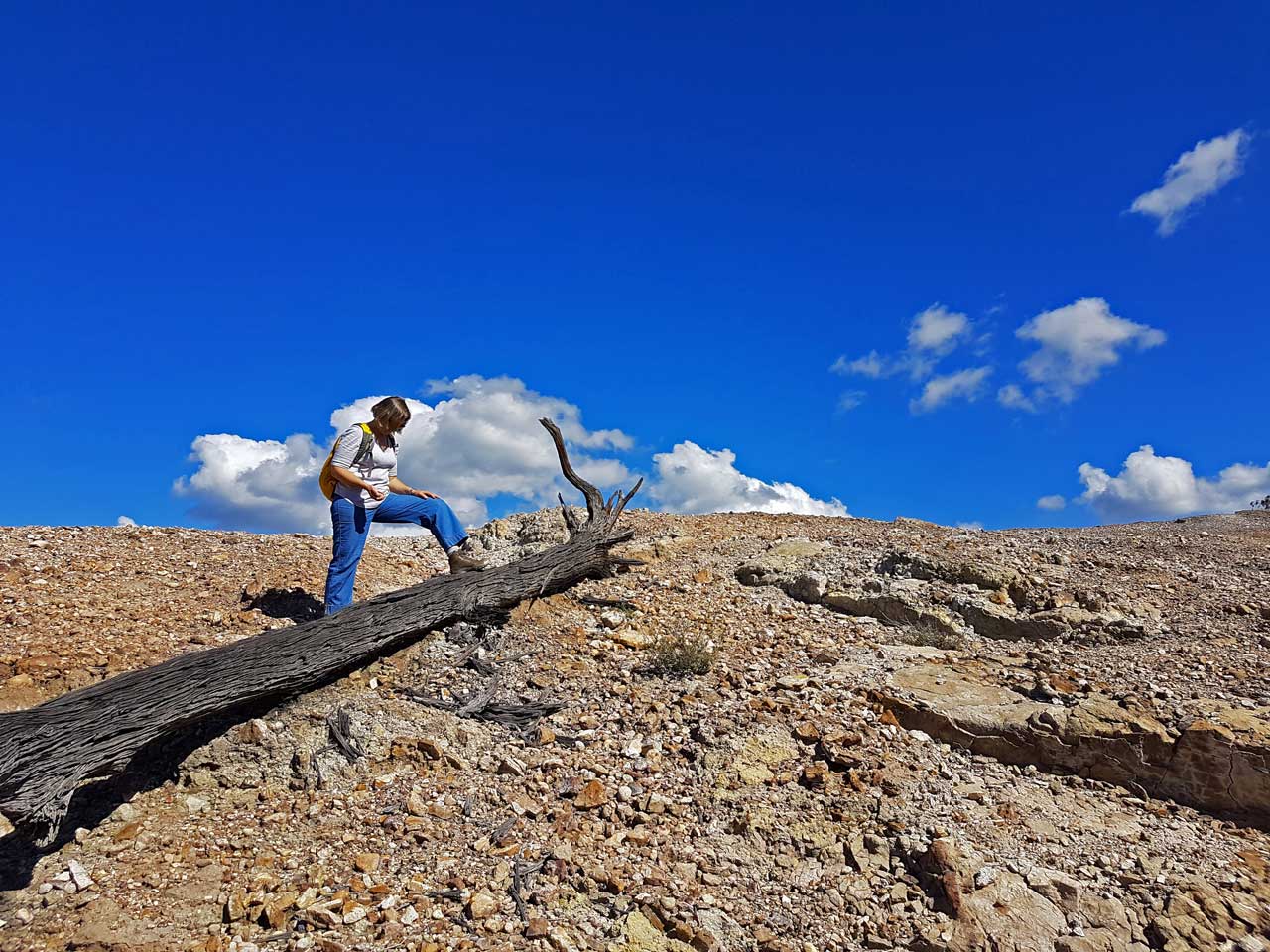
A slow burn
Burning Mountain is just not that kind of fire, but it is a nonetheless impressive geological oddity. Underground coal fires are common enough throughout the world, often in coal mines. But naturally occurring ones that have burned over such an extended period are rare. This is the only conserved one in Australia and one of only a few known in the world.
lkjsdfljkadljkbasdlkjfbsdljbf
Information displays in the reserve say the coal seam has been burning steadily across the landscape, about 30m below ground, for at least 6000 years. The National Parks and Wildlife Service plan of management (1993) for the area puts that date even further back:
“Recent studies indicate that two coal seams were ignited in an outcrop about 16km to the north of Burning Mountain. Movement of the burning head suggests an overall burning rate of one metre a year, giving a minimum of 15,000 years since ignition. However, in times when conditions were not favourable for combustion, that rate may have slowed and it is thought the seam may have ignited as long as 500,000 years ago.”
500,000 years! Human beings have only been walking the earth for around 200,000 – so if true – this fire is older than humanity. Geological time scales can be sobering.
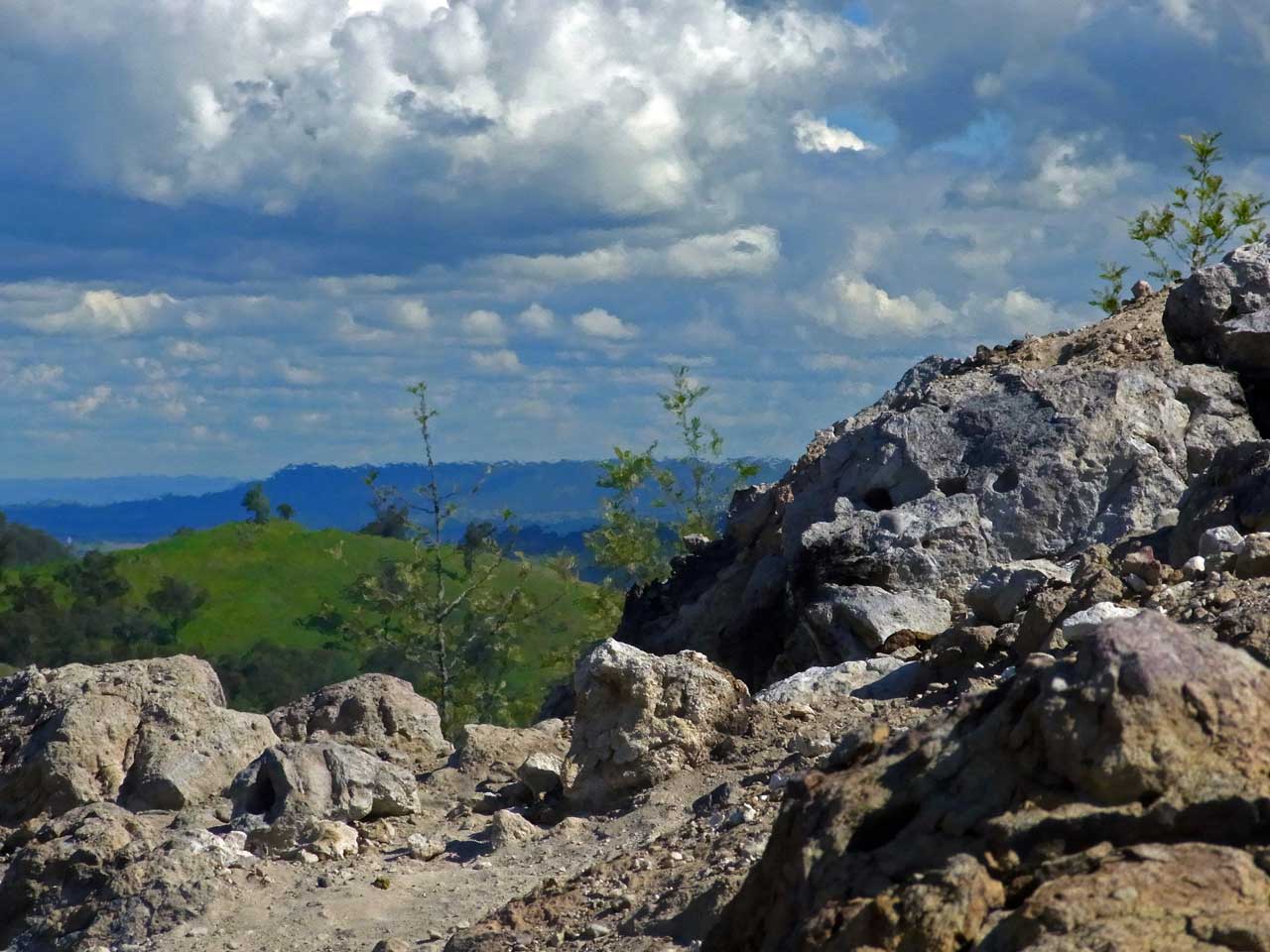
Dreamtime stories
The truth is, nobody really knows how this relentless smouldering fire started. Possible ignition sources include lightning strike, bushfires or chemical reactions. It’s also thought that Aboriginal camp fires could have been responsible.
In the absence of any definite knowledge, I like the Dreamtime story of the traditional owners of the land, the Wonarrua, who named the area Win-Jen which means fire. This ancient language is reflected in the name of the nearby village of Wingen.
The story is an intricate explanation of how the landscape was created. It tells of a woman who waited for her husband to return from a great battle. One by one, all the husbands of the tribe returned home. The woman became worried and climbed to the top of a high cliff to wait and watch for his return. After a long time, she knew he had died and stricken with grief cried until she couldn’t cry any more. She begged the great sky god Baayami to kill her – but instead, he turned her into stone. As she was transformed into rock she cried tears of fire which ran down the hill and set Burning Mountain alight.
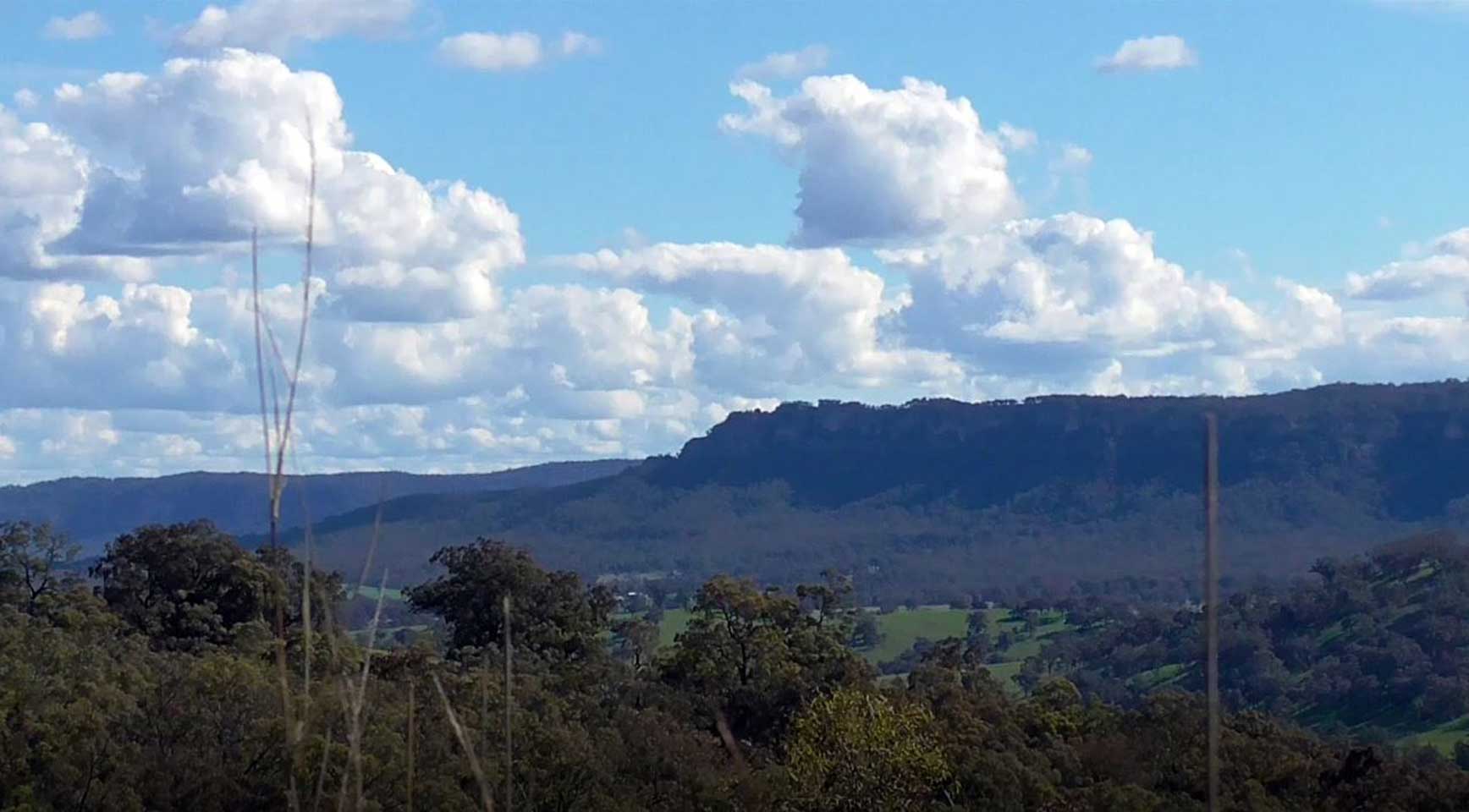
Volcanoes and ointment
Some of the early European settlers of the area mistook burning mountain for an active volcano. Eminent geologist Rev Charles Wilton solved the puzzle in 1829, correctly identifying it as a burning coal seam. Sulphur was extracted from the site to be used in a popular ointment of the 1940s to 1960s – sold under the brand “Winjennia”.
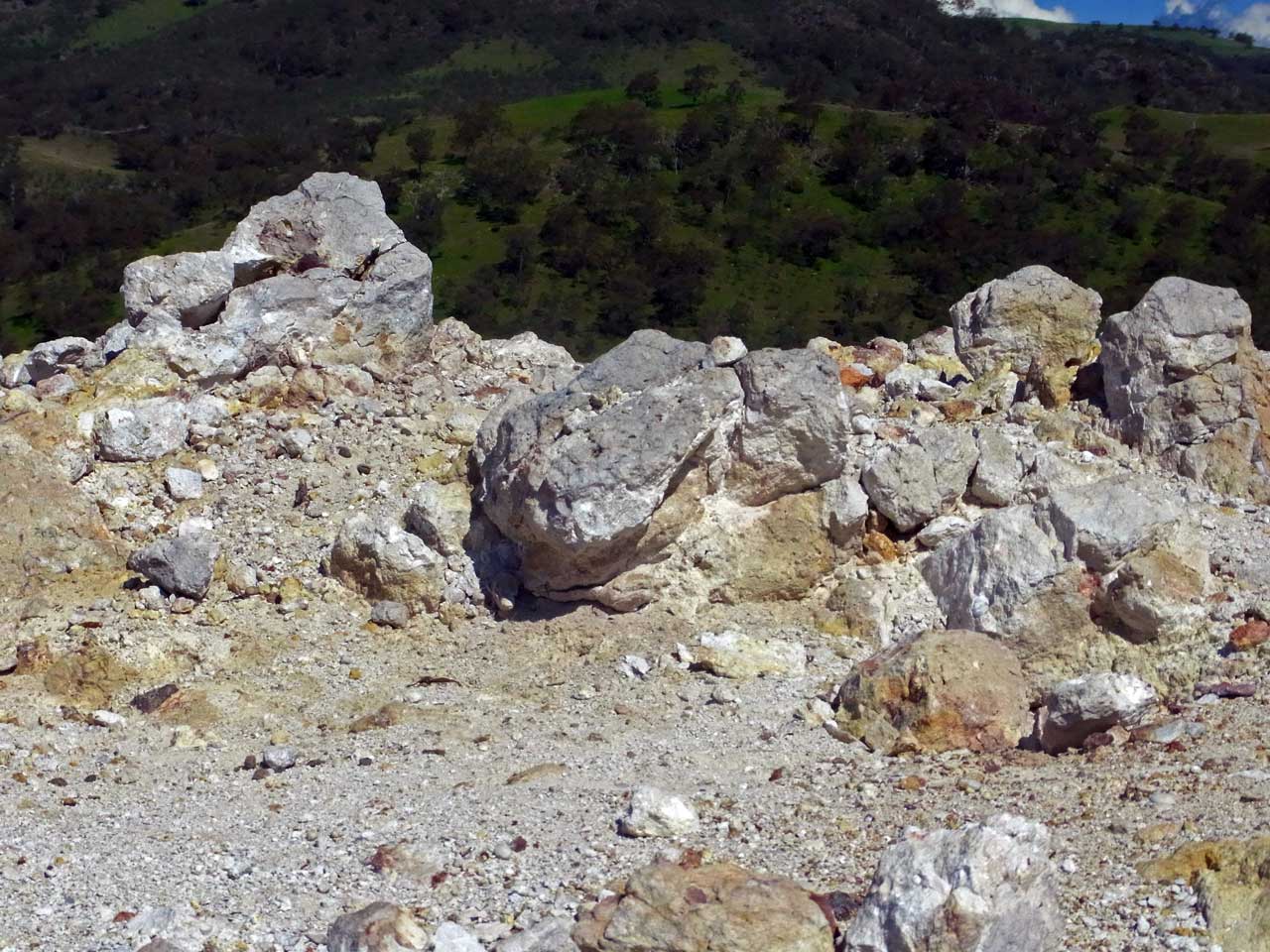
So what?
The impact on the landscape and vegetation of a 1700 degrees Celsius coal fire burning below ground is profound. As the coal seam burns away – the land above subsides into the void left behind. Cracks, holes, and gullies have opened up everywhere. Some of these admit further oxygen to continuously feed the fire. Soils are baked to brick-like hardness by the extreme heat. In some places this kills the vegetation. In other places just a few hardy species hang on. Animals take advantage of the free heating. There were clear signs that kangaroos had been lying around the warm ground at the fire head at night.
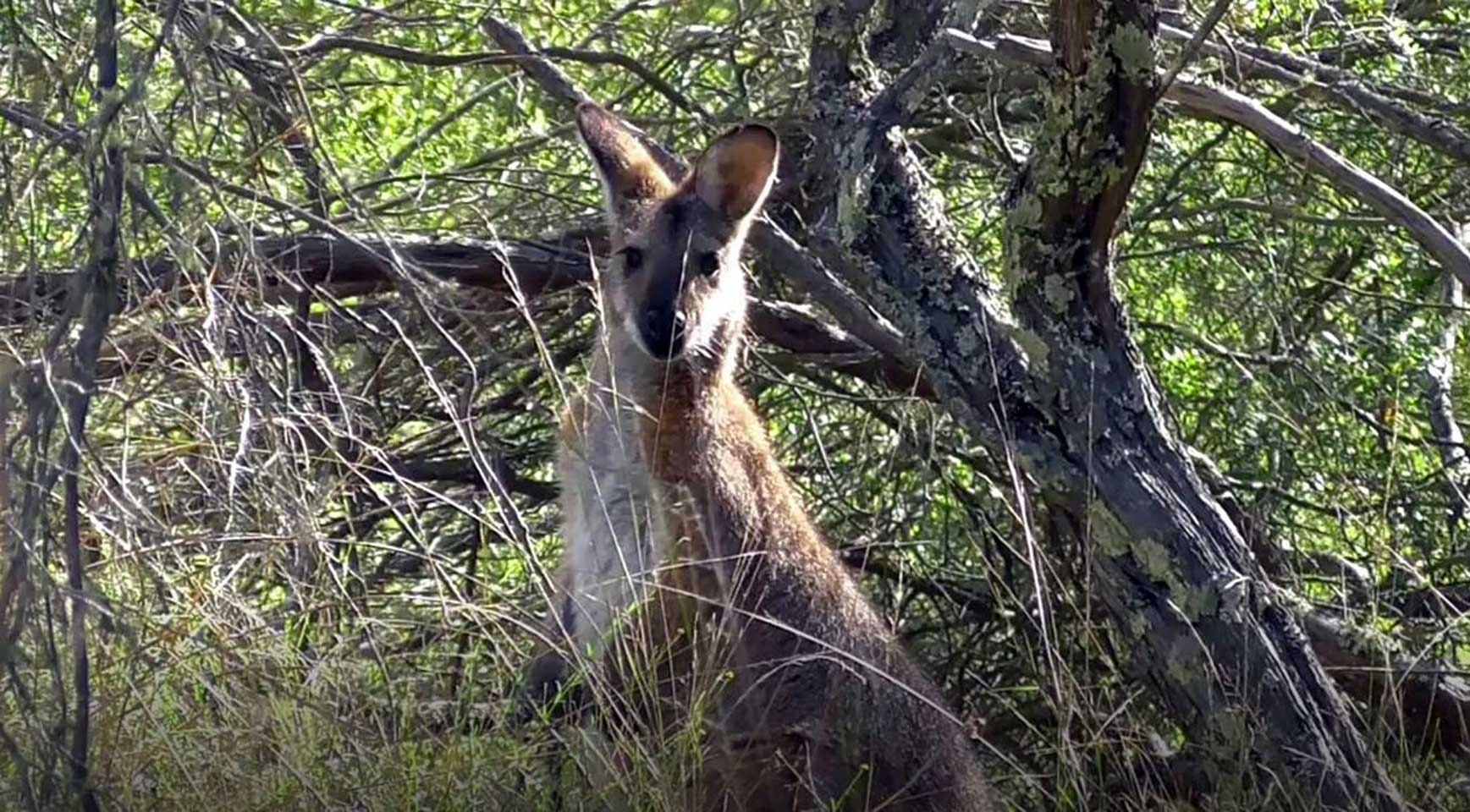
Where is it?
Burning Mountain reserve is on the New England Highway about 20km from Scone and a bit beyond the village of Wingen. There’s a fair bit of parking and picnic areas at the start. The walk is not too gruelling, but there are a few stairs. The features of the area are well explained by displays along the way. Next time you are heading up that way – it’s an interesting chance pull over and to stretch your legs.
Just don’t expect a flaming inferno.
